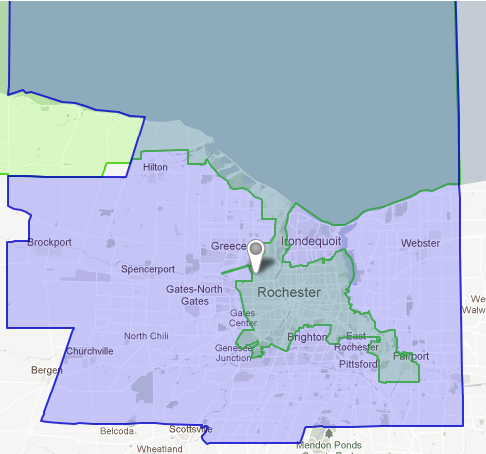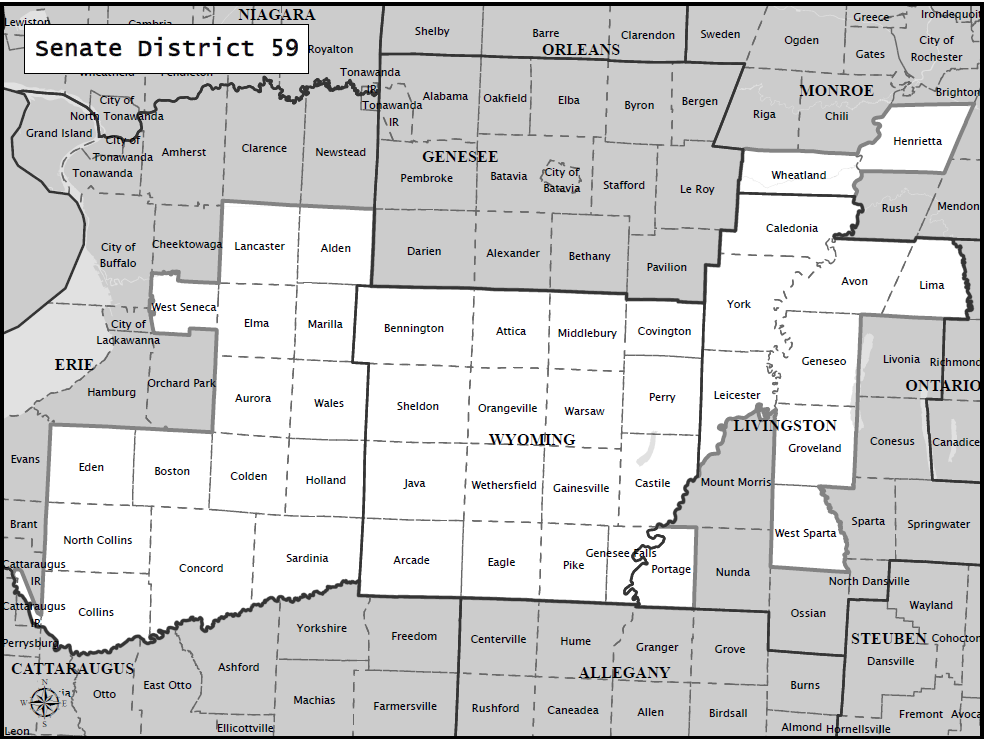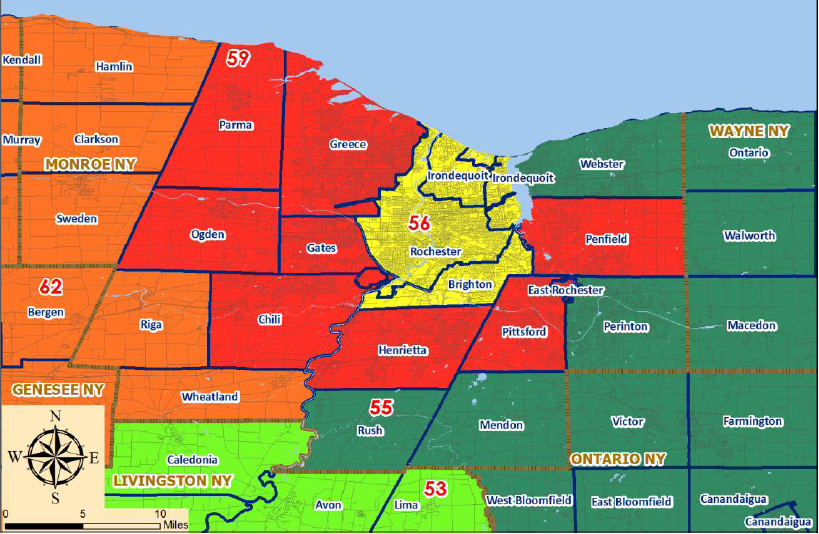 State lawmakers pulled a neat trick when it came to redrawing the boundary lines of their districts: Though 138 of them (out of 212) signed pledges while running for re-election in 2010 to support redistricting reform, they instead used the usual process under their own control, while promising to do different in 2022. Ten years from now.
State lawmakers pulled a neat trick when it came to redrawing the boundary lines of their districts: Though 138 of them (out of 212) signed pledges while running for re-election in 2010 to support redistricting reform, they instead used the usual process under their own control, while promising to do different in 2022. Ten years from now.
It’s not all that surprising, given the political realities: Senate Republicans depend upon redistricting and other elements of the political status quo to maintain control of the chamber despite having less than a quarter of all registered voters enrolled in their party. Assembly Democrats have been all too happy to respect their “gentlemen’s agreement” with the Senate Republicans to each draw the lines in their respective houses. Gov. Andrew Cuomo, who also promised to support independent redistricting, had other priorities. And voters, well, we don’t care enough about this once-a-decade process of truing up legislative boundary lines to population changes measured by the decennial census to scare the lawmakers into giving up control of it.
So redistricting remained in the control of lawmakers, carried out by a 6-member task force of lawmakers controlled by the majority leaders. Senate Republicans added a district to the 62-seat house and reconfigured lines in the Westchester and Albany areas so that they will likely be able to enlarge their precarious, 32-30 majority by two seats. Assembly Democrats drew maps that will likely allow them to bolster their much larger majority by four seats. (See analysis and maps comparing old and new districts by New York World and Center for Urban Research.)
So what did all this mean for the Rochester area? While there weren’t radical changes, some of the tweaks are unsettling. Several Senate districts that lean Republican in Western NY had to expand due to population loss in our area, and so 2 Buffalo-centered districts now reach into Monroe County. One, District 61, grabs a piece of the City of Rochester that contains the University of Rochester Medical Center. This means the area’s largest employer will officially be represented by a Buffalo-based senator if the incumbent in District 61 is re-elected, though of course, every one of our Rochester area senators promises to continue looking out for the medical center’s interests in Albany.
The second, District 59, will grow to encompass Wheatland, Henrietta and therefore the Rochester Institute of Technology.
Independent redistricting was carried out this year, as discussed in an earlier post, by Common Cause New York, which drew a full set of Assembly, Senate and Congressional maps focused on keeping the districts equal in population size as much as possible and keeping together “communities of interest” (using data on race, ethnicity, income, homeownership, mix of jobs, etc.). Common Cause’s map for the Senate, for example, would have created a Rochester-centered Senate district encompassing the City of Rochester as well as the Towns of Irondequoit and Brighton, fertile grounds for a Democratic candidate.
 Although the Common Cause maps were apparently not very influential in the redistricting of the State Legislature, they may have had a significant impact on the maps eventually created for Congress. A federal judge drew those maps after Assembly and Senate leaders couldn’t agree on the lines. In Rochester, the judicial map creates a Monroe County-based Congressional seat, much as the Common Cause map did. This is a big improvement over our current, somewhat infamous “earmuffs” district stretching from Buffalo to Rochester along Lake Ontario.
Although the Common Cause maps were apparently not very influential in the redistricting of the State Legislature, they may have had a significant impact on the maps eventually created for Congress. A federal judge drew those maps after Assembly and Senate leaders couldn’t agree on the lines. In Rochester, the judicial map creates a Monroe County-based Congressional seat, much as the Common Cause map did. This is a big improvement over our current, somewhat infamous “earmuffs” district stretching from Buffalo to Rochester along Lake Ontario.
With Common Cause maps as an example of “what could have been” under an independent process, it’s even more disappointing to see that put off until 2022. And the specific reforms adopted by the Legislature leave open the question of whether we’ll truly see any change even then.
Reminiscent of St. Augustine’s plea for chastity and continence—“but not yet,” lawmakers passed a constitutional amendment that will create a 10-member commission of non-legislators to draw the lines in 2022. Each of the 4 legislative leaders (2 majority party, 2 minority) will appoint 2 members. This group of eight will pick the last two members, requiring approval of at least 5 members. The commission’s redistricting plan must be approved by at least 7 members before it goes to (uh-oh) the Legislature for a vote. (The amendment has to be passed again by the Legislature next year, and then approved by voters in a referendum to take effect.)
It’s that last provision that has led cynics in Albany and across the state to declare this reform to be a sham. Good-government groups were split on the issue, with Common Cause and the New York Public Interest Research Group against it and the League of Women Voters and Citizens Union for it. I’m betting they were all lobbied hard by Cuomo to support the plan, which may have been the best deal he could get given the political capital he was willing to spend on the issue.
The optimistic view says there will be new voices at the table, with less dominance by majority appointees (4 of 10 vs. the current 4 of 6). But a majority of Commission members will be beholden to the “Incumbency Party,” strongly committed to preserving the status quo. And the Legislature has the final say–it can amend the commission’s lines if it rejects the commission plan in two separate votes. That looks a lot like the current process—with lawmakers choosing voters, before voters have a chance to choose lawmakers at the polls.


